United States Of Existence interview
United States Of Existence were one of earliest neo–psychedelic groups from the US. Born in Baltimore in 1978 out of the ashes of prog–rock outfit Klangfarb, their goal was to reproduce the sound of their favourite 60s psych bands.
They consisted of Paul Rieger (guitar, bass and electric sitar), Bob Tiefenwerth (organ, electric harpsichord and piano), Dennis Davison – of Jigsaw Seen fame – (lead vocals, acoustic guitar and theremin) and Gary Schwartz (on drums and harmony vocals).
The group used vintage instruments and antiquated recording techniques to fully embrace the sounds of the first psychedelic era (1967–68). They never got to play live, preferring to spend their time recording in their basement studio or going on record–buying binges at all the discount stores, searching for obscure psychedelic albums with weird names like Harumi, Phulph, Bohemian Vendetta…
They were championed by Greg Shaw (Bomp!) who chose one of their first recordings, the killer ‘Return To The Psychedelic’, as the opening track for the seminal ‘Battle Of The Garages’ LP compilation (1981). They also appeared in another famous compilation, ‘The Rebel Kind’ (1983).
‘Anything Goes!’, their first 45, saw the light in 1984, self–released on the band’s own label, U.S. Fidelity Sounds, and featuring members of the Association on backing vocals. In 1986, they caught the attention of the Bam Caruso label from the UK, where they released their only album, ‘Introducing: the United States of Existence’, in 1986.
The release of ‘The Psychedelic Yesterdays of Tomorrow’ via Guerssen Records is the first ever vinyl retrospective of pioneering 80s psych band United States of Existence.
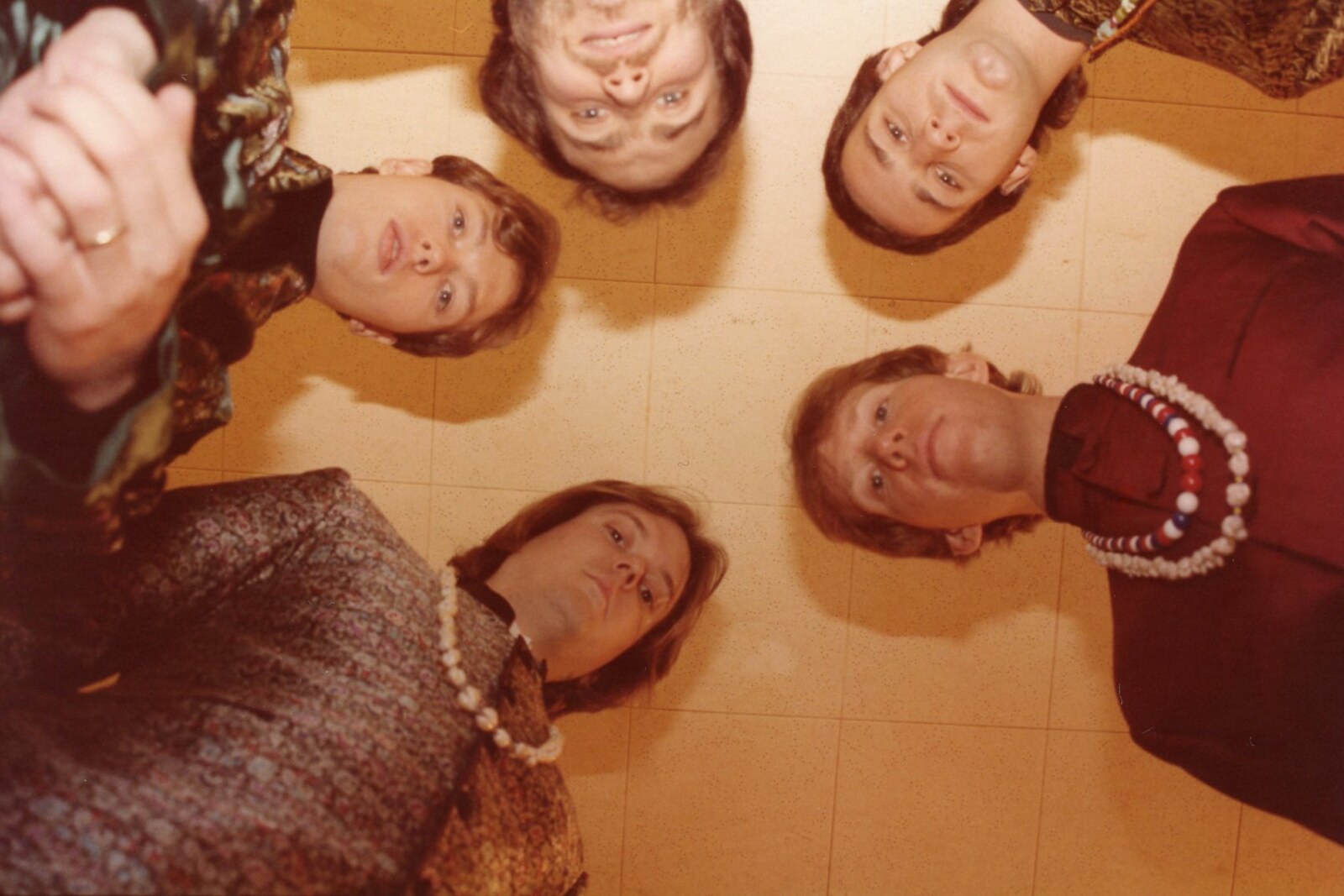
Interview with United States of Existence: Bob Tiefenwerth (keyboards), Paul Rieger (guitar and bass), Gary Schwartz (drums and vocals) and Dennis Davison (lead vocals).
“Our concept was to become a band from 1967.”
Where and when did you grow up?
Paul: We mostly grew up in Baltimore, Maryland, in the U.S. Bob and I were born in the mid-1950s. Gary and Dennis are a few years younger.
Bob: My family moved from New Jersey to Baltimore MD in 1963, so I spent most of my life in Baltimore. I currently reside in Wake Forest NC.
Gary: I grew up in Baltimore, Maryland. I currently live in Southern California.
Dennis: I grew up in Baltimore, Maryland and moved to Los Angeles in 1986.
When did you begin playing music? What was your first instrument? Who were your major influences?
Bob: I began playing in the late sixties. First instrument was a Hammond L100, the exact model Keith Emerson used to play in The Nice. It was considered a budget alternative to the B3, which is why a lot of bands, particularly British bands, used it when starting out. Early Genesis, Small Faces, Caravan, Graham Bond and many others used it. I still have it today. At one time, The Nice were a big influence, as I liked that Emerson was very influenced by classic jazz organists like Jack McDuff and Jimmy Smith. Of course, for the psych sound, the transistorized portable combo organs were the default. In that regard, The Blues Magoos were influential regarding their organ sound and style, as was Strawberry Alarm Clock and many others of that ilk. So that became the organ sound and approach of the USE. I went through a long period of being fascinated by the harpsichord, and the players Ralph Kirkpatrick and Wanda Landowska. Electric harpsichord featured on a few USE tunes.
Paul: As a kid, I loved tape recorders. My parents bought me a tiny, battery operated reel to reel tape recorder as a birthday gift. I would experiment with recording records from the family record player and then playing them back together to create echo and flanging. I was incredibly fortunate to attend Loyola High School, which unbelievably, in 1969, had a musique concrète sound studio. Bob also attended Loyola High and took the musique concrete course. Learning about recorded sound from a highly evolved Jesuit, Les Schnierer, was pretty remarkable. He played us Van Dyke Park’s ‘Song Cycle’ and actually mentioned the Beach Boy’s ‘Smile’ and how Brian Wilson had burned the tapes in his fireplace! I became interested in playing guitar when I was about 15, because I wanted to get my hands on an amp with tone controls and reverb. I couldn’t wait to make sounds with an electric guitar! My parents dutifully signed me up for lessons and rented an amp and guitar for me. Needless to say, I learned nothing and the nice gent who gave me lessons would often fall asleep. A year or so later I realized I wanted to actually learn how to play. Perhaps I would practice this time? But I figured the bass would be ‘easier.’ There were only four strings! Plus, I did gravitate towards bass when I heard the Fifth Dimension’s ‘Aquarius.’ I thought – “man, that band has a really great bass player!” – not realizing that it was studio master Joe Osborn – now one of my all-time favorite bass players.
My influences were 60’s AM radio and the records that my parents played on their stereo.When I was about five, my parents bought me my first record, the Marcel’s ‘Blue Moon’ which I would play, over and over. (I still love that song.) I remember racing home after kindergarten to put on the table radio in the kitchen to wait to hear the Contours’ ‘Do You Love Me’ – which I loved and still love. And later, there were Tony Mottola’s ‘Roman Guitars I’ and ‘II’ and various ‘Tijuana Brass’ LPs, courtesy of my parents. I still love and play those records, today.
Gary: I started playing drums and messing around with guitar when I was probably around age 7 or 8. I used to jam with my brother Frank. He played guitar and bass. He also played trumpet in a cool band called ‘Bill James and the Expressions’. I remember when I used to go and watch him practice with that band, they were a cover band. I always thought to myself, I’m gonna play in a band too once I get older. My first instrument was drums. When I was a little kid I got a red sparkle Snare drum that I used to play. I used to bang along to The Beatles, the Who, Jimi Hendrix.
Dennis: I did everything backwards. I formed my first band in 1977 without knowing how to play a musical instrument or sing. I was inspired by punk and I responded to a musicians wanted ad in the local newspaper. They were looking for a punk band to back Edith Massey (of John Waters films). I told the guy that I had a band, but I wasn’t interested in backing anyone. The next day I placed an ad seeking musicians. Within a few weeks my first band, Ebenezer and the Bludgeons was born and the guy who placed the ad came to one of our rehearsals and wound up managing us. We played our first show in January 1978 at The Marble Bar in Baltimore. I gradually figured out how to play some guitar and write songs. My major influences growing up were Bowie, Iggy and Lou Reed.
“We were experimenting with form and tone colors”
What bands were you a member of prior to the formation of the United States of Existence? Klangfarb is a name that got mentioned while doing some research. Did you record anything as Klangfarb?
Bob: Paul and I formed Klangfarb as we had a mutual interest in musique concrete and experimental music in general. We were experimenting with form and tone colors, using physical tape manipulation, a laborious process compared to digital means. We have at least one full CD’s worth of material, mostly unreleased. It was a time of discovering sounds for their own sake, using collage techniques, and the existence of analog-only methods was part of the aesthetic. We also did structured songs that were more straightforward. This was an all-instrumental group, no vocalist. Klangfarb appears on the ‘Best of Baltimore’s Buried’ compilations.
Paul: Besides some ad hoc ‘jams’ with high school friends, my first group was Klangfarb, formed by Bob, Rick, (an excellent sax and clarinet player), and myself in early ’75. We wanted to be a ‘prog’ style band but also work-in musique concrète. We eventually enlisted a really good drummer, John. We did a lot of recordings in my parents’ basement. I had worked during the preceding summers while in high school to be able to buy a Teac 3340-S four track recorder and a few microphones. We did one recording, Charnel Ochre, in a 16-track studio. You can hear it on a compilation LP that Bob and I put together with Jay Graboski of Oho in the late ‘70’s called, ‘The Best of Baltimore’s Buried.’ The song is also posted to the USE website. There are a bunch of USE demos and rehearsals available there, too.
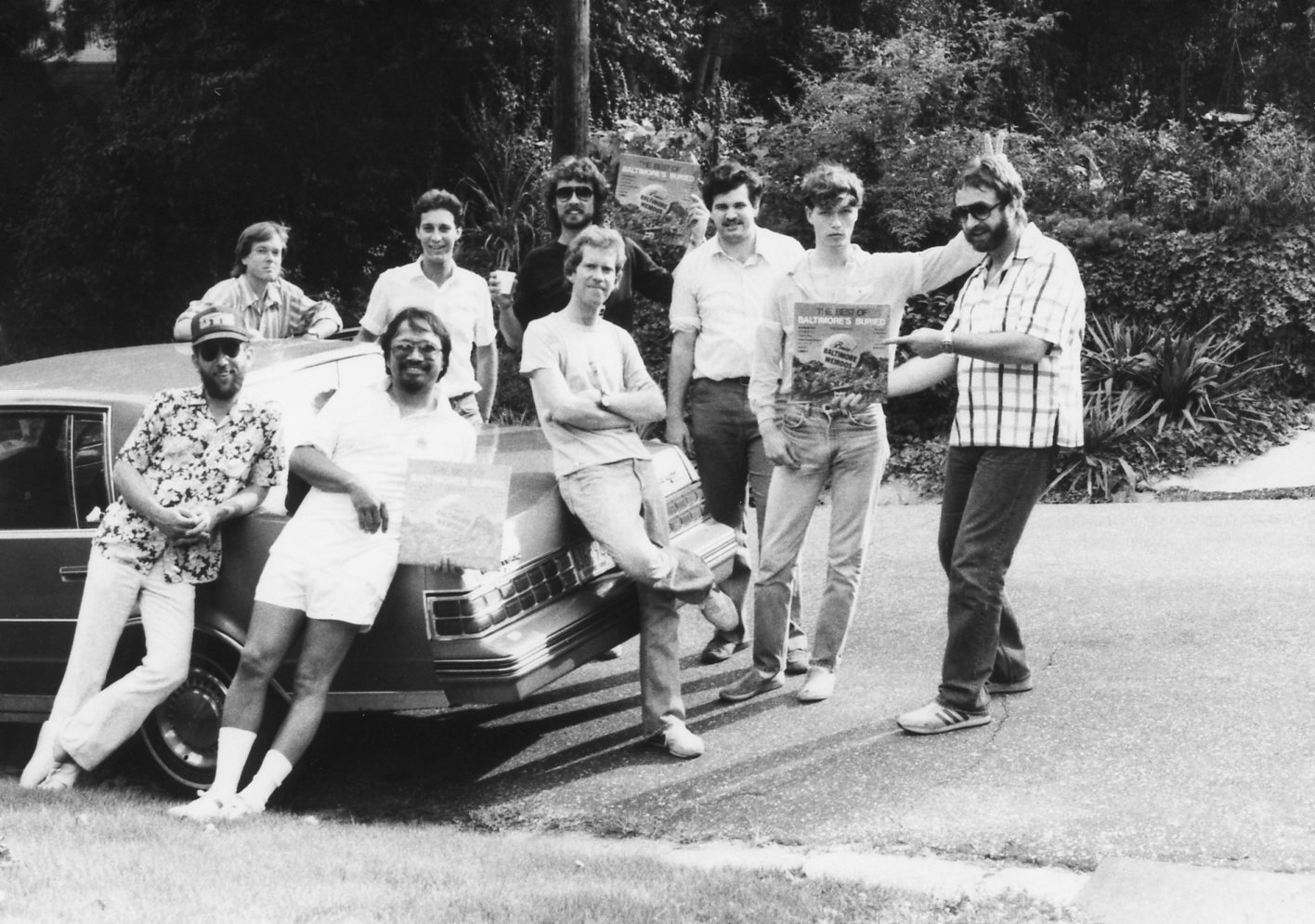
Gary: When I first joined ‘United States of Existence’, we were doing recordings under the band name ‘Klangfarb’. I was slowly molded into the ‘USE’ scene. Paul and Bob used to share records with me – many of the great 60s pop records with Hal Blaine on drums – one of my heroes. The Electric Prunes, Phulph – the list goes on and on. Even though I had heard a lot of those records prior to meeting these guys, they were more etched into my mind and frequently on my playlist especially after meeting Paul and Bob. During the USE time, I played in a Top 40 Cover band for many years.
Dennis: After The Bludgeons broke up in 1980 I formed a band called Alter Legion. We released one single and moved to Los Angeles in 1982. The band imploded within a few months and scuttled back to Baltimore to reform with a few of the members. When that fizzled again, I recorded a single as The Playground. Paul Produced the A-side, ‘Cordially Invited’ and Bob played organ. Gary played drums on the B-side, ‘These Are The Days.’ I wound up remixing both songs for the first Jigsaw Seen album, ‘Shortcut Through Clown Alley’. I moved to California in ’86 with the intention of assembling a band to play the songs that I’d written for The Playground. Gary joined the band and we changed the name to The Jigsaw Seen before our debut album came out because we found out about another band called The Playground.
You were one of the very first neo-psych bands from the USA. How did you decide to use the name ‘United States of Existence’?Can you elaborate on the formation of the United States of Existence? What was the main concept behind it?
Bob: As far as being one of the first, it’s very gratifying when others are influenced by what you’re doing. We appreciated it when Michael Quercio said “The United States Of Existence track on Battle Of The Garages was a big influence on me during the forming of Salvation Army.”
Paul: During Klangfarb, Bob and I realized that we both were big fans of the 60’s psychedelic bands. Around that time, the warehouses were unloading all of the unsaleable, un-loved 60’s LPs as inexpensive “cut-outs.” We would go on treasure troves to all of the local stores – we picked up a ton of truly absurd vinyl for 44 cents – 50 cents – 99 cents… I found the Phluph LP (a Boston psych band) loved the LP and went back and purchased every copy available at 44 cents apiece. After Klangfarb had run its musical course, we decided to form our own ‘60’s psychedelic band. I came up with the name. Bob and I were both fans of Existential literature and the name felt completely 60’s, psychedelic and absurd. Our concept was to become a band from 1967. Our look and, particularly, our recordings, would be indistinguishable from any psych band of that era.
What kind of music did you play very early on?
Paul: Our first song was ‘Return to the Psychedelic.’ We wanted to put out a single with ‘Return’ as the A side and a song called ‘Distortions’ as the B. We wanted ‘Return’ to be a tribute to the great bands and sounds of the psychedelic era. We had finished the instrumental tracks and mix at some point in 1978, but we had to find the right singer to do the vocals. Klangfarb had been an instrumental group, so we didn’t know many singers. Getting someone with the right voice took some work. Luckily, I happened to hear a recording of Dennis’ band, Ebenezer and the Bludgeons, while working on the ‘Baltimore’s Buried’ LP. In fact, we wanted Dennis’ group on the ‘Buried’ LP, but his management shot it down, I think, because they were working on their own compilation. I knew Dennis’ voice would be perfect. So, after one of his shows at Towson’s Oddfellows Hall, I introduced myself and convinced Dennis to come down to the ‘basement studio’ (a picnic table housing my trusty Teac 3340-S) to listen to what we had in mind. Fortunately, Dennis was a good sport and agreed to do the vocals, but he had his own group and we were essentially ‘borrowing’ him. Later, the song was released on Greg Shaw’s ‘Battle of the Garages.’ The 45 idea was dropped and ‘Distortions’ morphed into ‘Shadows of Rainbows.’ We had another drummer, initially, Bert Taylor, a really great and funny guy, but he eventually moved on and we were very fortunate to enlist Gary.
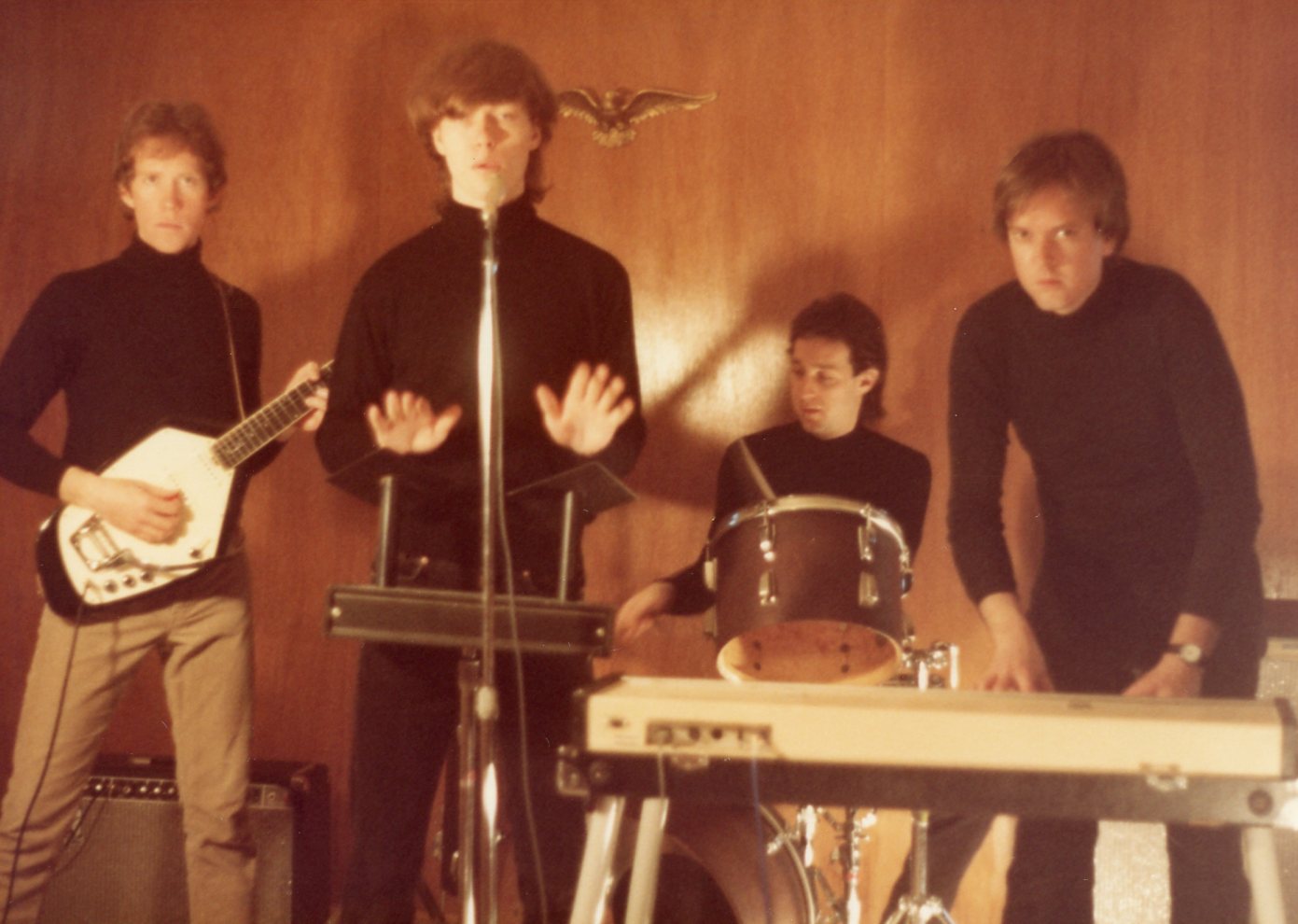
What are some bands that influenced the band’s sound the most?
Bob: I would say Blues Magoos, Electric Prunes, Association, and of course Phluph and Bohemian Vendetta!
Paul: You can hear many of them on ‘Return’ which was an homage to our heroes: Blues Magoos, Electric Prunes, Strawberry Alarm Clock, Nazz and even Blue Cheer. And later we flew off in a harmony pop direction thanks to our love of the Association. There were hundreds more.
Gary: Spanky and Our Gang, The Electric Prunes.
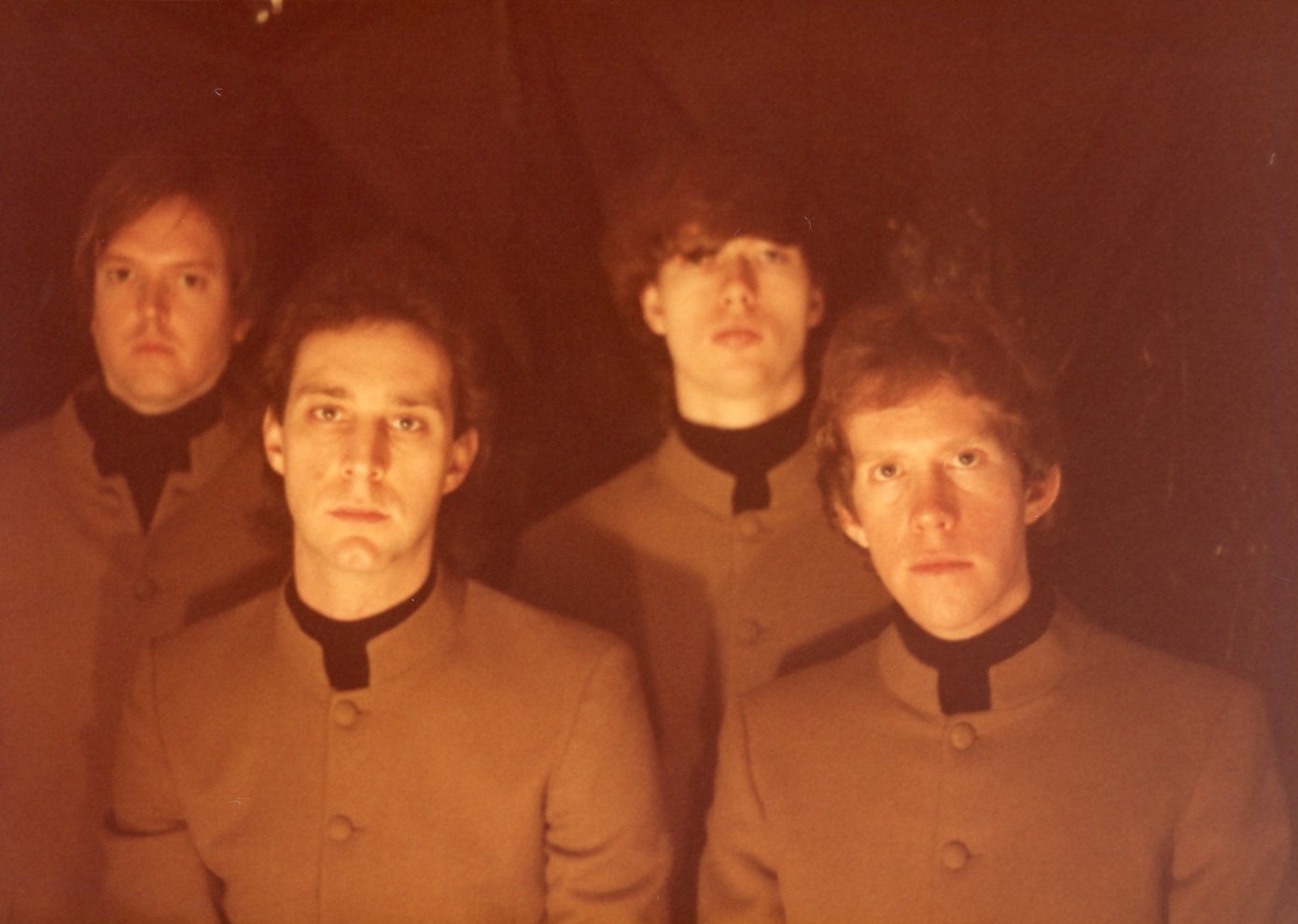
I understand that you never played-out as a live band. Why did you choose that?
Paul: Initially, playing-out was a goal. We couldn’t wait to turn up w/ Nehru jackets and 60’s instruments and blow everyone’s minds! But, eventually it was tough just getting the recordings done. Greg Shaw wanted a mini LP for Voxx and so did we. We were trying to write more songs and get them together for recording. We were going to school and I was working full time, too. I was the ‘group leader’ of sorts and ultimately felt that it would be too hard to change gears in the middle of writing and recording to play live. We would need a bass player (I had been doing all the bass and guitar parts). We would need a P.A. We would need to work up several covers to supplement our material. We would need a place to rehearse, as there were limits on how loud we could play at our parents’ homes. (Gary usually practiced with practice pads to keep the noise down). I would have wanted the group to sound ready and polished. But my decision to abandon playing live was, in hindsight, not a good one. We didn’t need a bass player to play live. We could have done some covers. We didn’t need to sound perfect, etc. So, this was not a great decision on my part. Bert would have called it a ‘flub-up.’
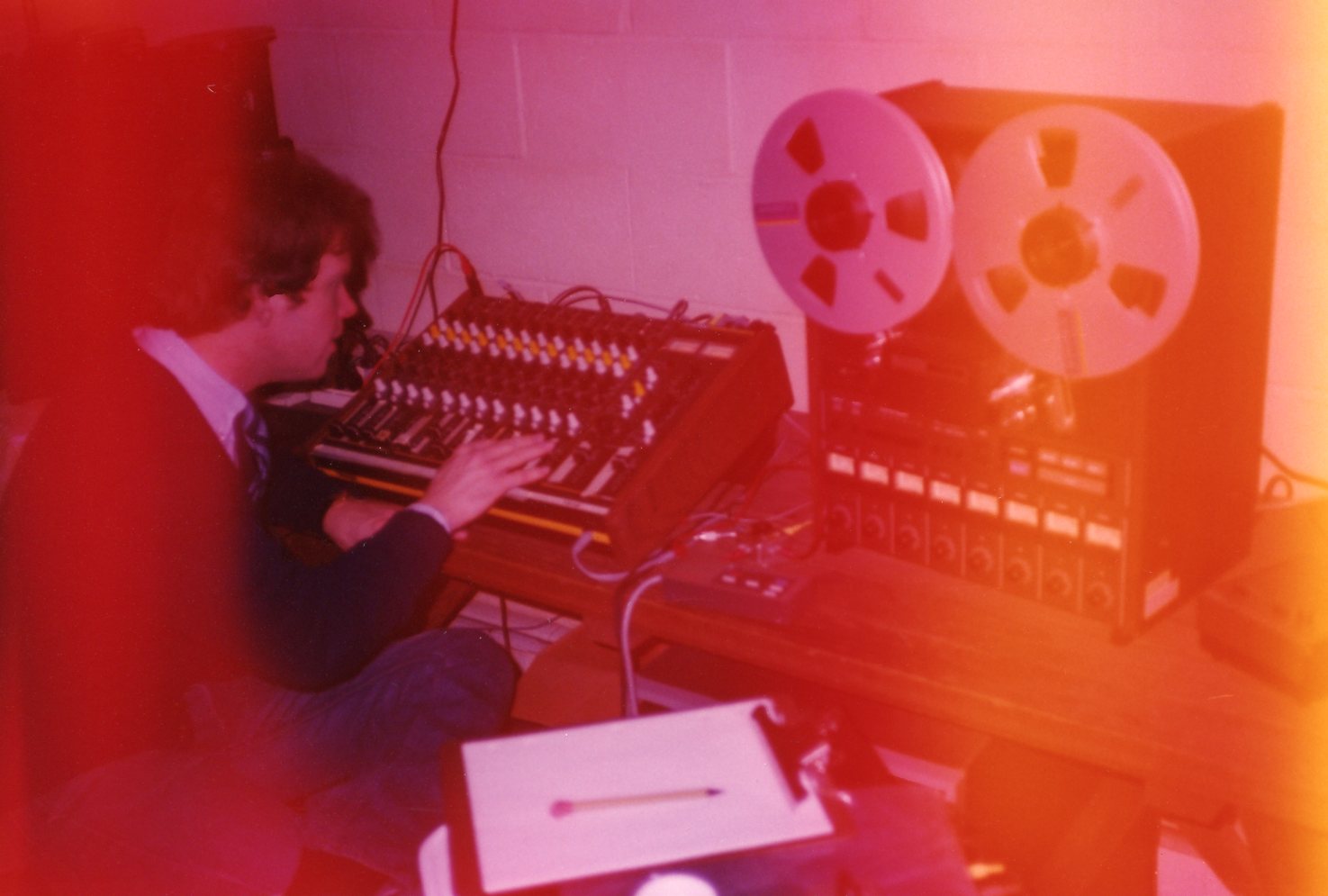
Gary: I think Dennis and I would have played live.
Dennis, your band Jigsaw Seen, did play live all the time. What are some bands you shared stages with?
Dennis: Lots- The Cramps, Smashing Pumpkins, Dave Davies. I played a live radio show with Brian Wilson.
What’s the story behind your debut album? Where did you record it? What kind of equipment did you use? How many hours did you spend in the studio?
Paul: We had been encouraged by Chip Lamey of Sounds Interesting Records, to do an LP. We self-released a single, ‘Anything Goes!’ and ‘Makin’ My Scene’ around 1983 which Chip loved. He had placed ‘Shadows of Rainbows’ on his ‘Rebel Kind’ anthology.We recorded virtually everything in my parents’ basement. We used a twelve-channel mixing board and, initially, the 3340-S, followed by a Teac 80-8.We used spring reverbs until (thankfully) Yamaha made an early digital reverb that could take percussive sounds. We had no noise reduction as it was too expensive. Our soundproofing was our winter coats hung strategically to absorb sound. We wanted to make the LP as perfect as we possibly could. Bob and I wrote a lot of songs but we dismissed a lot of them as not up to snuff. The rehearsal process was a lot of fun. We would seldom go more than two minutes without someone cracking up! The recording process was more difficult, though, naturally. We learned from our Klangfarb days, that the basic tracks had better be perfect. You could not disguise flawed basic tracks. We scheduled recording of basic tracks when my parents could be coaxed away for weekend vacations. Understandably, tracking was too loud and repetitive for them, otherwise. (The home had no soundproofing). We wanted songs that would electrify a listener and worked really hard to put our best stuff on tape. Dennis would sometimes rehearse with us as a group, but, more often, Dennis and I worked together rehearsing and recording his vocal tracks. Dennis did a truly amazing job! Gary did all the background and harmony vocals. When Gary first joined,we didn’t realize what an incredible voice he had! His harmonies are all over the album. Listen to his wall of vocals, recorded by Bob, on ‘In Classic Play.’ We used a lot of vintage instruments: a Vox Phantom 6 string, Danelectro electric sitar, Fender electric 12-string, a Rick or Fender Precision bass, depending. Bob used either an Elka Panther or Telstar organ. He played a Univox electric harpsichord/piano and you can hear him playing autoharp on ‘In Classic Play.’ I played harmonica on ‘It’s A Drag.’ Dennis played a Maestro theremin and guitar on ‘Volunteer Fireman.’ Gary used a cool, retro wooden kit and played tambourine and sleigh bells on several things. The guys helped me mix the more complex tracks. Bob also tracked Dennis’ and Gary’s vocals in his basement when I was stuck in school. It was a team effort. The guys put up with a lot. I would decide to revise lyrics after the song was essentially finished or change the key of the song after we had completed the basic tracks. They never complained!
We didn’t do any extended jams which one often finds on 60’s psych LPs. We tried to ‘jam’ from time to time, but failed to produce anything that we could even bear to listen to.
In producing, I tried to deliberately mimic the sounds of ‘60’s psych recordings: extreme panning, double-tracked vocals, liberal use of reverb. By the time the songs were finally mixed, Chip was winding down his record label, so we were seeking out potential labels. I sent a demo to Andrew Lauder, who forwarded the tape to Phil Smee at Bam Caruso. We didn’t realize that Phil Smee was a really accomplished graphic artist. He sent us a bunch of LPs that his label had released and we were very impressed with his love of the music and the incredible art! We loved his ‘Introducing’ LP cover. He put the LP out in the Summer of 1986. I don’t think it sold very well, though. I think soon after our LP was released, Bam Caruso hit some tough times and couldn’t sustain their label.
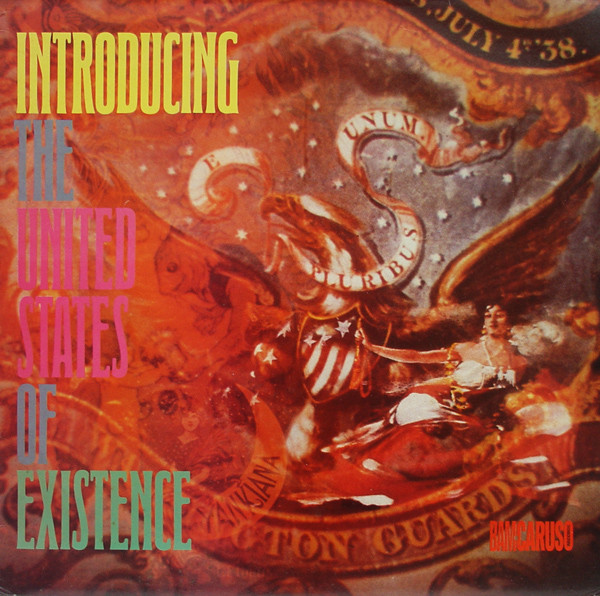
Gary: I remember some memorable moments during recording. One in particular was recording the drums on ‘Makin’ My Scene’. Paul had placed an amp in the bathroom and mic’ed the room. My drum sounds were being pumped through that bathroom amp. That was so COOL.
“Return to the Psychedelic”
Would you share your insight on the albums’ tracks?
Paul: Sure – here’s a capsule:
‘A Scandal in Bohemia’ – An unsophisticated, ‘big city’ con artist, attempts to trample upon the virtues of a small town, only to find himself appropriately detained in the hoosegow. Too bad he met his Irene Adler. Fuzz bass and sleigh bells set the mood. Bob came up with the perfect organ part.
‘Love to the 44th Power’ – Electric Prunes with a nod to the Moving Sidewalks and Oscar Wilde’s ‘The Picture of Dorian Gray.’
‘Makin’ My Scene’ – originally called ‘Teen Beat,’ a loving nod to the Music Machine and Standells, with Booker T’s ‘Time is Tight’ summoned for the very end. This is why Dennis was the perfect singer.
‘Bad Roads at Midnight’ – the Colonial era name of an actual place where the ridge along the road was so high as to endanger the lives of the riders of the era. One’s horse could easily slip along the side.
‘Somethin’ ‘Bout the Way’- our homage to P. F. Sloan and the Mamas and Papas.
‘It’s a Drag’ – about as garage as we got. I heard Rodney on the ROQ play this while visiting my sister in California. That was cool!
‘Welcome Tomorrow, Goodbye Today’ – Bob is a musical genius. End of story. He will be embarrassed to read this. When he played me the demo, I knew that we could pull ‘it’ off. (‘It’ was an entire LP of USE music.) He allowed me to add the lyrics, because he is a kind man. Musically, for me, this is the pinnacle for USE.
‘When I Was Young’ – one of the later USE tracks inspired by John Lennon. Dennis played acoustic on this, too.
‘Anything Goes!’ – another Bob masterstroke. Featuring the vocals of Association members Jules Alexander, Terry Kirkman, Larry Ramos and Rick Ulsky. Suffice to say, we were incredibly fortunate to have those guys stop over to the USE basement to do vocal parts in the middle of their Summer tour. They were genuinely nice guys and funny as hell! They told us a lot of hilarious war stories.We got to see them the night before at Baltimore’s Pier Six concert pavilion and were invited to hang-out with them backstage. They did an incredible version of ‘Requiem’ that night.
‘Volunteer Fireman’ – a great contribution from Denny. Gary, Bob and I were doing our best Hal Blaine, Larry Knechtel and Joe Osborn impressions. Many people, rightfully, cite this as their favorite USE song.
‘In Classic Play’ – more Bob genius. I think this would also work with just piano and voices. This is Gary at his best on harmony vocals. Backwards guitar and autoharp can be heard.
‘Gone’ – Electric Prunes inspired, of course. We did a re-recorded version at our friend, Bill Pratt’s, studio, to ‘simplify’ it, but we decided that the ‘complicated’ version was better.
‘Baroque Hi Fi’- I had become fed up with the amount of time it took to produce anything of merit. Could we write a song, track it and add most of the parts in about 48 hours? We pretty much did. A metronome was recorded as a ‘click’ track. Drum recording and final mixing took place at Bill Pratt’s studio, a few weeks later.
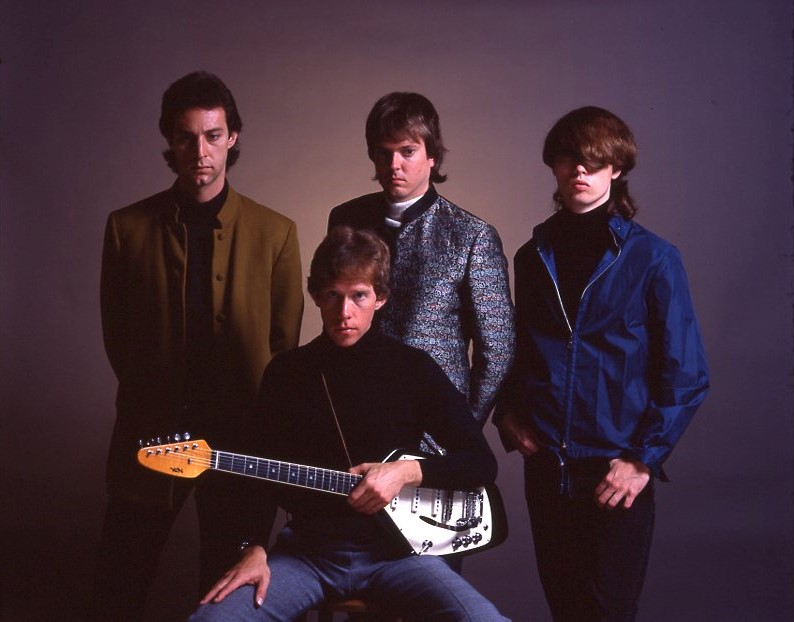
Were you inspired by psychoactive substances like LSD at the time of writing the album?
Bob: Like Frank Zappa, our drug of choice was coffee, which may explain the frenetic tempi of some of our tunes (and his as well!)
Paul: Absolutely. Caffeine. Could you tell?
Gary: No Comment. Let’s just say that the font changed when I was entering the answer to this question.
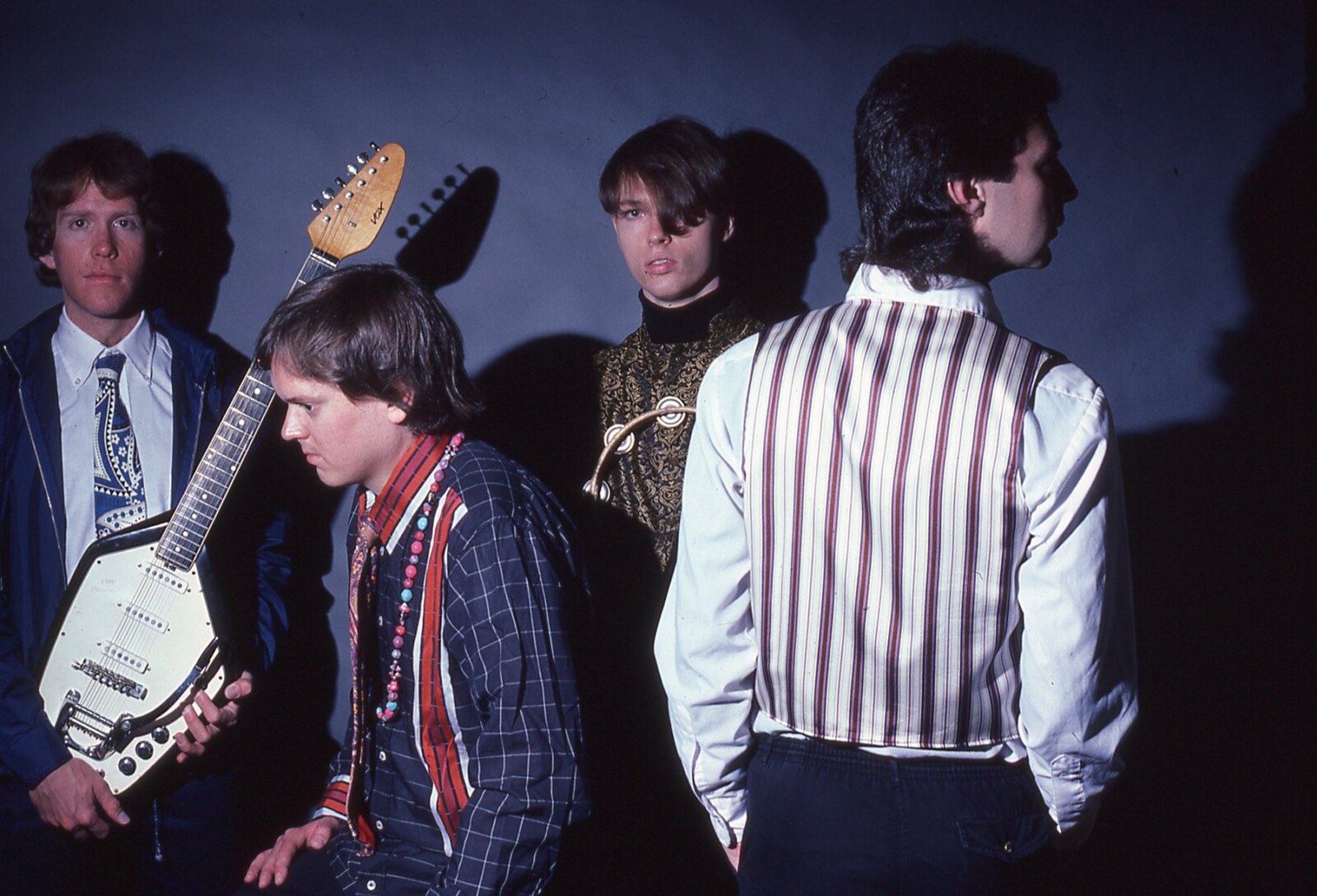
You also released two singles?
Paul: Yes, ‘Anything Goes!’ backed with ‘Makin’ My Scene’ in mono on the flip.This was the first release for our own ‘US Fidelity Sounds’ label. Later, Bam Caruso issued ‘Gone’ as a 45 with Paul Roland’s ‘Madam Guillotine’ on the flip.
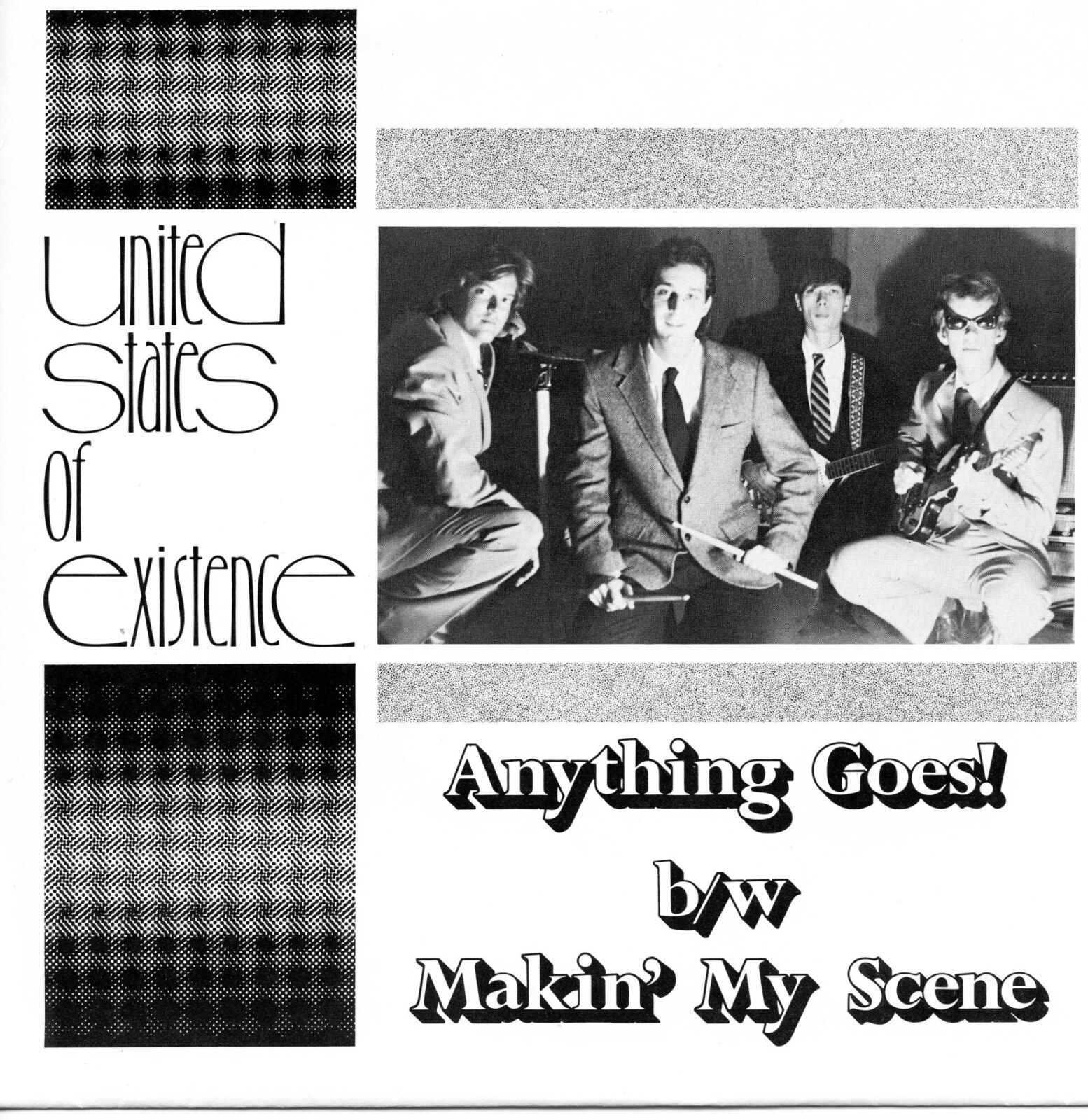
What happened after the band stopped? Were you still in touch with other members? Is any member still involved with the music?
Bob: We all still keep in touch and sometimes collaborate. I saw Dennis Davison’s band Jigsaw Seen a few years ago in Austin.
After United States of Existence, I formed a band called BLAMMO (Beleaguered League of Artists Meeting Mass Opposition) with Mark O’Connor from the band OHO. We self-released 8 CDs and did virtually no promotion of any of them. I think we were discouraged that record companies generally don’t accept unsolicited submissions, and we were not versed in digital distribution platforms, which were very new at the time anyway. So we simply documented our compositions and performances by issuing very small-run CDs for us and our friends. We did play live locally. The music resists easy characterization, but I would say that Theater of the Absurd is as good as any.
After that ended, Paul and I discovered that we were both fans of Antonio Carlos Jobim, so we formed a band called Trio Novo (with Tim Taormino from BLAMMO on drums) to play Jobim’s music plus other classic jazz tunes. Somehow, other songs crept in, like ‘America’ as done by The Nice, ‘Repent Walpurgis’ by Procol Harum, and ‘Happy Boy Happy’ by the Small Faces. We did play live with that band and it was great fun. We released one CD; an additional CD is unreleased.
A move to Houston ended Trio Novo, but I was able to put together a 5-piece jazz band called Diminished Capacity, which played live in the Houston Bay area.
At this point one may ask “What does psychedelic music have to do with jazz?” Well, the ‘rave-ups’ common to some psych tunes utilize an improv strategy, although simpler; both encourage experimentation; and by the timelate-psychedelic was morphing into prog, there were increasing incorporations of jazz elements. King Crimson’s ‘I Talk to the Wind’ is essentially a jazz tune. Jack Bruce, Ginger Baker, Manfred Mann among others, were all jazz players first. ‘Eight Miles High’ was an attempt to mimic John Coltrane on a 12-string guitar. There are many, many other similar examples. Ultimately, the immortal words of Duke Ellington apply: “If it sounds good, it IS good.”
I’m currently not in a band right now, but still practice regularly. The pandemic puts forming a new group increasingly unlikely for the foreseeable future, if ever. Plus, players in this area seem to be mostly doing the so-called ‘classic rock’ covers thing, which I am not going to do.
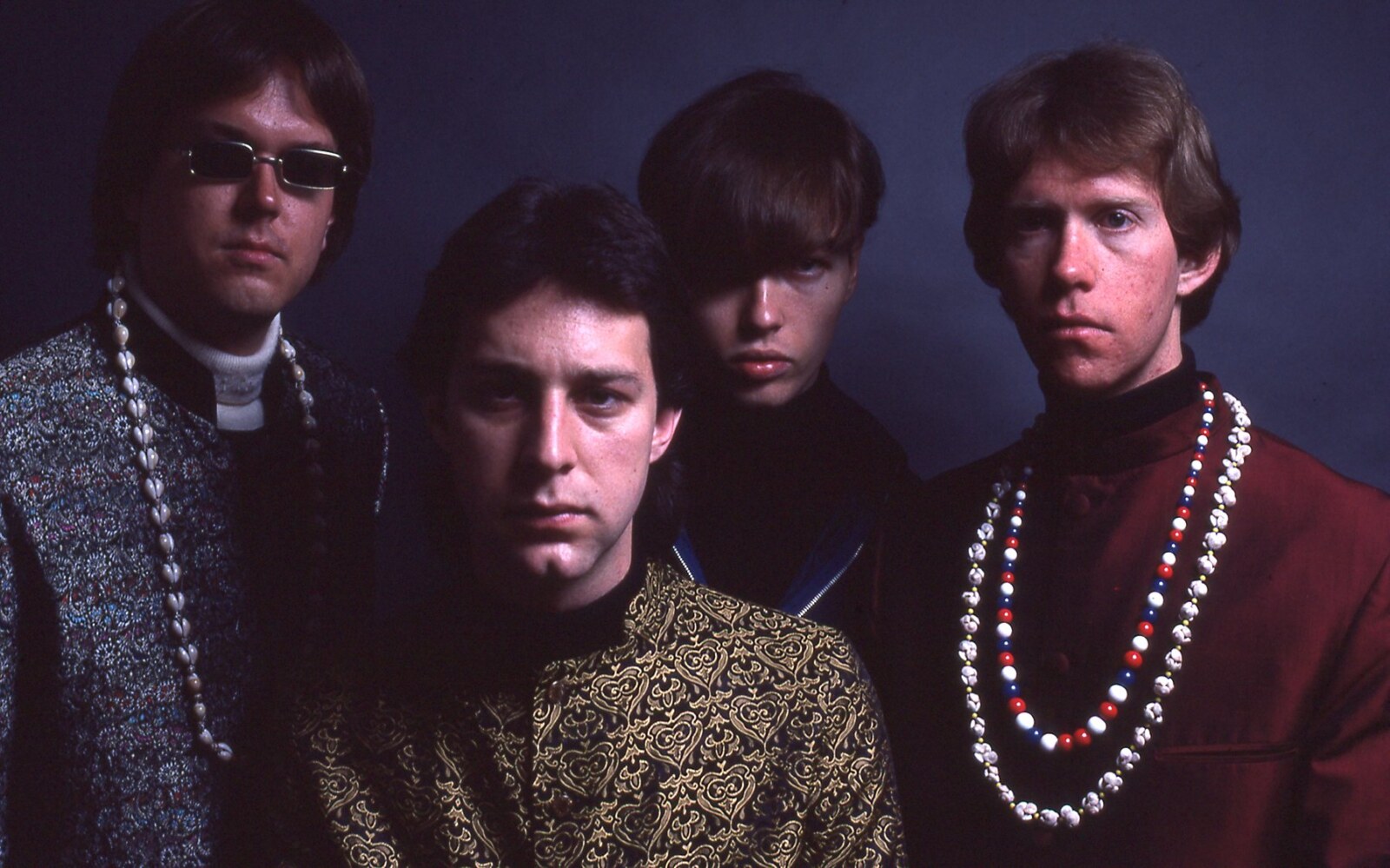
Paul: Yes, we all remained friends and continued doing music. Bob and I helped Dennis a little with his first Jigsaw Seen LP. Gary joined Dennis’ Jigsaw Seen in Cali. Bob and I eventually formed Trio Novo to play bossa nova and jazz, mostly the music of Antonio Carlos Jobim.
Gary: I had met Dennis prior to him becoming the vocalist for the United States of Existence. He was in a great punk band in Baltimore and I auditioned to be their drummer. I got the gig but turned it down.
Fast forward to 1988, Dennis had moved to California and formed The Jigsaw Seen who were known as The Playground for a short period of time. They needed a drummer and I got the gig. Stayed with them for a few years. Even after I left The Jigsaw Seen, I was and continue to be a big fan of their work. I still play music with my musical partner Mark O’Keefe.
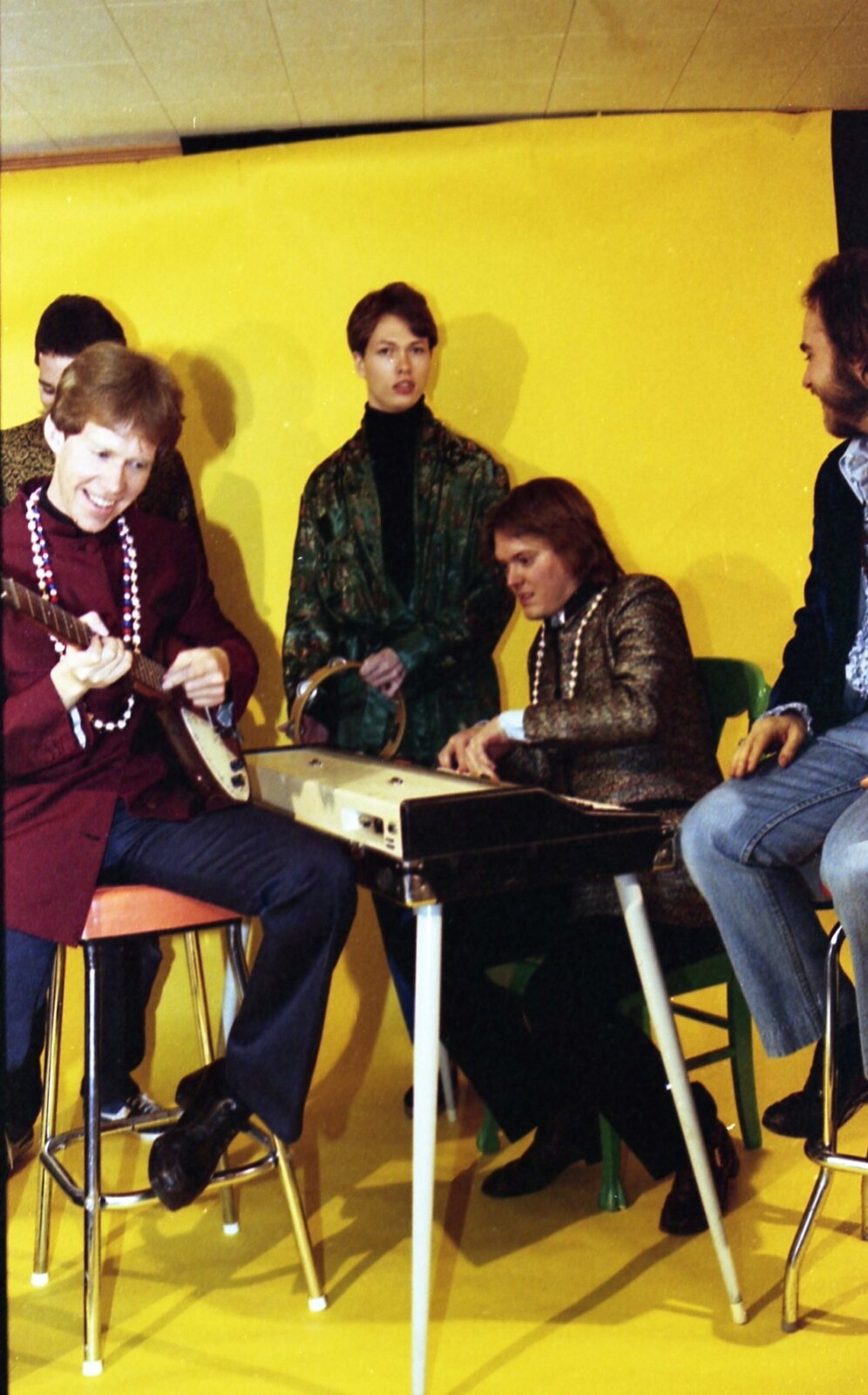
Speaking of Mark, he helped bring my latest single ‘Less is More’ to life as well as Paul. Paul had found the original which we had recorded; I’m pretty sure during the same time when we were recording ‘Makin’ My Scene’. The tape included some rhythm tracks which we were able to preserve by ‘Baking the Tape’. Paul arranged to have that process done. Once I received the tracks back, which were now separated and digitized, I was able to add Bass and Guitar – which was performed by Mark, Lead Guitar – performed by Paul, Vocals and Tambourine – Performed by Dennis. Even though this track is released under my name, it features all of the USE members – Paul, Bob, Dennis and Gary.
Looking back, what was the highlight of your time in the band? Which songs are you most proud of?
Bob: Being included on Greg Shaw’s ‘Battle of the Garages’ compilation and recording with the Association are two highlights for me.
Any discussion of favorite songs would have to include ‘Return to the Psychedelic.’ I also have a soft spot for ‘Shadows of Rainbows.’ Both are examples of our caffeine-soaked aesthetic.
Paul: I enjoyed working together as a group. Everyone had a great sense of humor and there was never “band drama.” ‘Welcome Tomorrow’ is still one of my favorites. And ‘Anything Goes,’ – hanging out and recording with Jules and the Association was pretty amazing!
Dennis: My favorite U.S.E. recording is ‘Shadows of Rainbows.’
The highlight of my time in the band was recording vocals with Paul or Bob engineering. We probably did more laughing than recording. Paul, Bob and Gary are some of the most talented musicians that I’ve ever worked with and some of the nicest people I’ve ever known.
Gary: ‘Anything Goes.’ It features the members of The Association. A dream come true.
Are you excited about the upcoming Guerssen release?
Bob: Pleased and grateful about the upcoming release. Guerssen is taking good care with the package, including photos I haven’t seen in years.
Paul: Yes! I already owned a bunch of their releases and knew that they had ‘off the charts’ great and crazy stuff on their label. I hadn’t listened to our music or looked at our hilarious photos for a long time and it brought back a lot of good memories! The LP will contain all of our finished USE tracks of the era, plus a remix of ‘A Scandal in Bohemia’ which we did, (but was not used), for the ‘Children of Nuggets’ box in around 2005.
Gary: Really excited and appreciative that Guerssen is doing this.
Dennis: Yes! A new generation of freaks will be able to discover us.
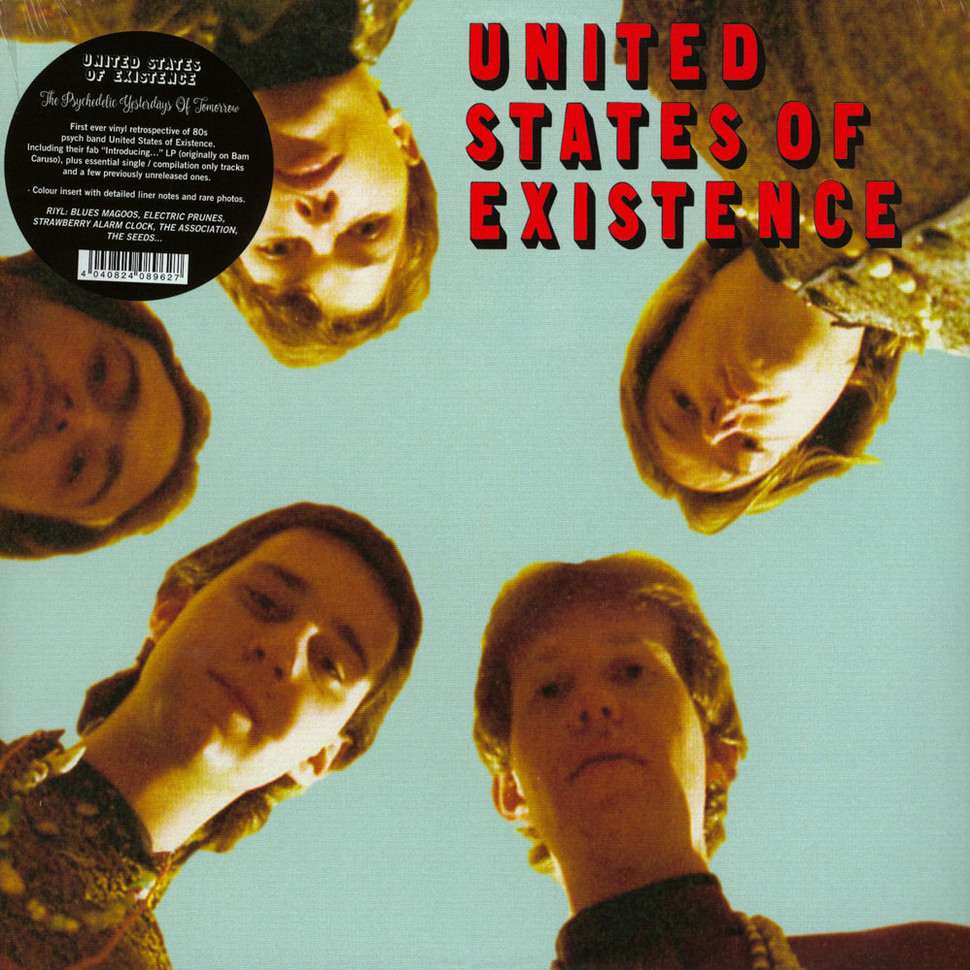
Let’s end this interview with some of your favourite albums. Have you found something new lately you would like to recommend to our readers?
Bob: Some old favorites: Bill Evans, ‘Live at the Village Vanguard Complete’, ‘The Amazing Bud Powell Vol. I’ and ‘II’, Thelonious Monk, ‘Live at the It Club’, Larry Young, ‘Unity’. As far as something new, I’ve heard an advance copy of Dennis Davison’s solo album ‘The Book of Strongman’ and highly recommend it to your readers. Due in October I believe.
Gary: Not only do I love psych and garage punk, I do have a passion for progressive rock. Also rock in opposition bands (RIO). Some of my favorite albums to this day are:
Van der Graaf Generator – ‘Pawn Hearts’
Henry Cow – ‘In Praise of Learning’
James Blood Ulmer – ‘Black Rock’.
New releases- Tame Impala, The Asteroid No 4, The Watch, Manna/Mirage, Clare Means. The list goes on and on….
There are so many to mention but I do like to post a lot of “what’s on my playlist?” via social media.
As far as new music goes, I like to listen to a lot of radio shows which helps keep me immersed in present and past music.
Rod Misey of WVUD, Michelle of the Melody Fair show on KXLU. Also Deborah Sears of Prog Rock Diner and Joe Koubek of Deep Cuts Radio. Also a shout out to Rodney Bingenheimer. I love a lot of what he plays.
Paul: I have too many ‘favorite’ LPs. It would take me a week to list them.
As for new music, Dennis’ ‘Book of Strongman,’ is really amazing and will be worth the wait for his fans! And I’ve been enjoying local Md. rocker Mike Smith’s recently released ‘Paperhearts’ E.P. – really well written and performed power pop with 70’s Brit swagger! And, for fellow Beach Boys fans, Capitol Records has been digitally releasing a ton of alternative takes and mixes to beat copyright deadlines. There is some unbelievable stuff! Also, although the album is not brand new, I love R. Stevie Moore’s and Jason Falkner’s ‘Make It Be.’ I’ve been a fan of Jason Falkner’s music since the Grays. ‘Another Day Slips Away,’ is a really great song – it must be heard – likewise ‘Sincero Amore’ and who could not love the classic ‘I Hate People.’
Dennis: Some of my all time favorite albums are Love – ‘Forever Changes’, Bee Gees- 1st, The Stooges- ‘Fun House’, Buffy Sainte Marie- ‘Illuminations’, Scott Walker- ‘Scott 4’, Wire- ‘Chairs Missing’. My favorite contemporary artist is Aldous Harding. She’s phenomenal!
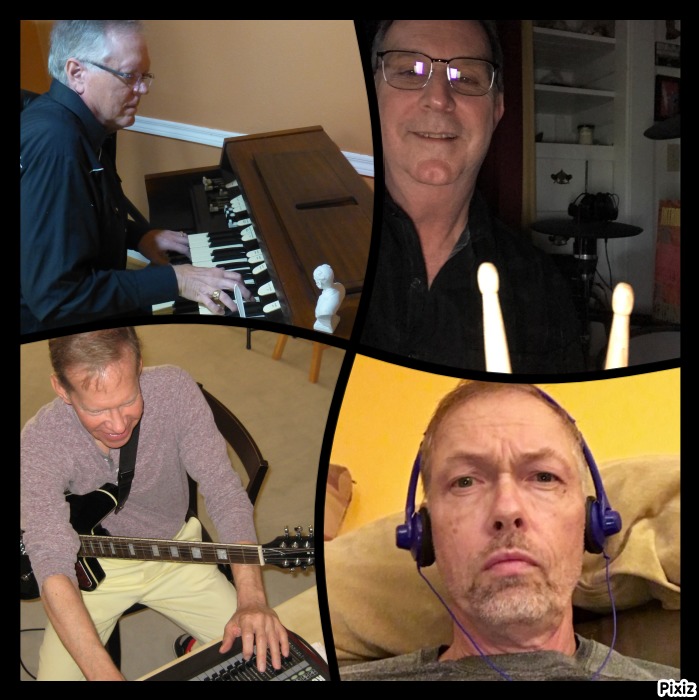
Thank you for taking your time. Last word is yours.
Bob: Thank you for this opportunity; hope we weren’t too long-winded!
Paul: Thank you, Klemen, for letting us do this cool interview! Sorry for prattling on. Peace, good health and harmony to all of your readers.
Gary: Thanks so much Klemen. Love your interviews and musical selections. Much Peace and Happiness.
Dennis: Thanks, Klemen! It’s been fun.
– Klemen Breznikar
United States Of Existence Official Website
Guerssen Records Official Website



